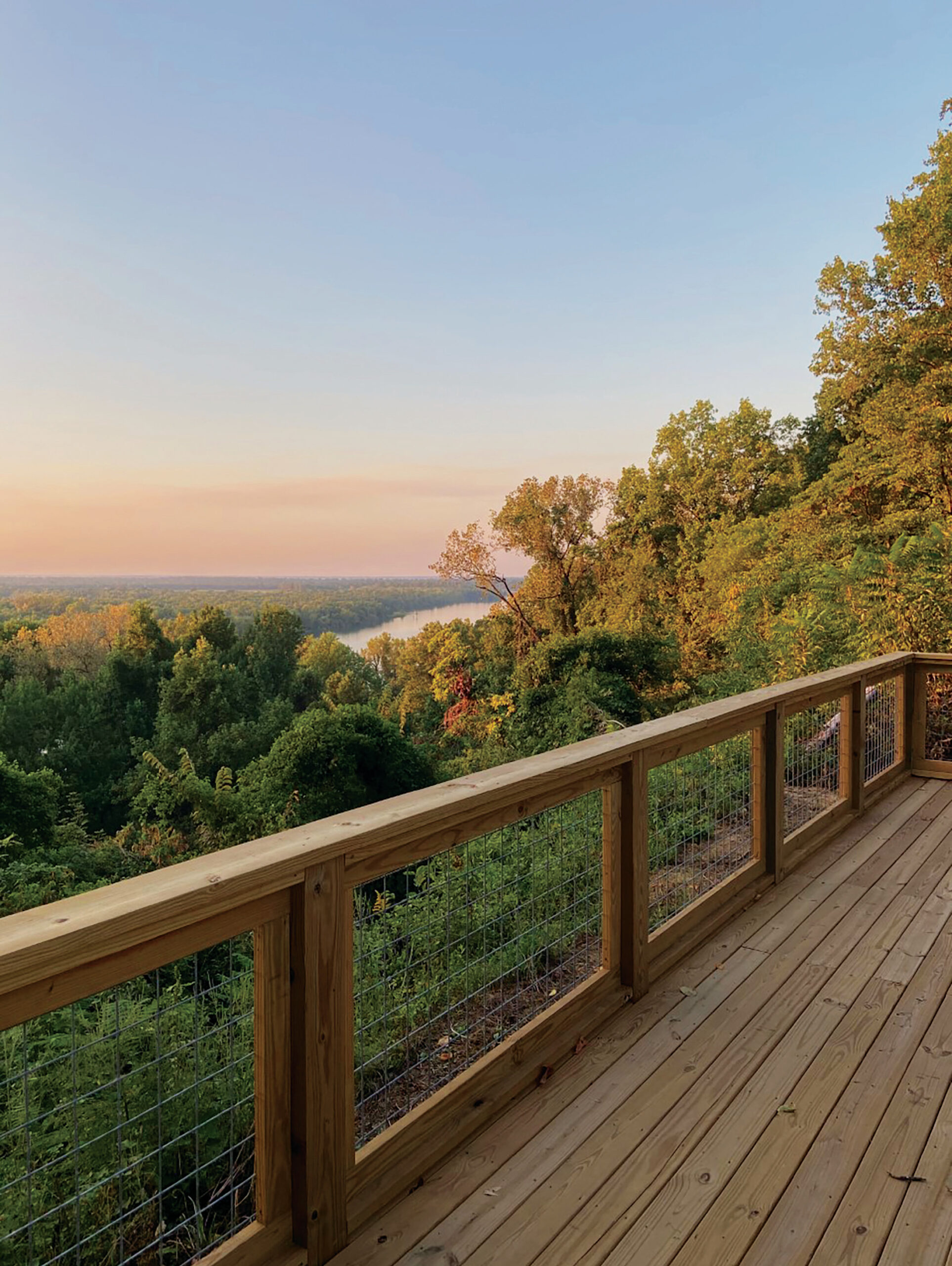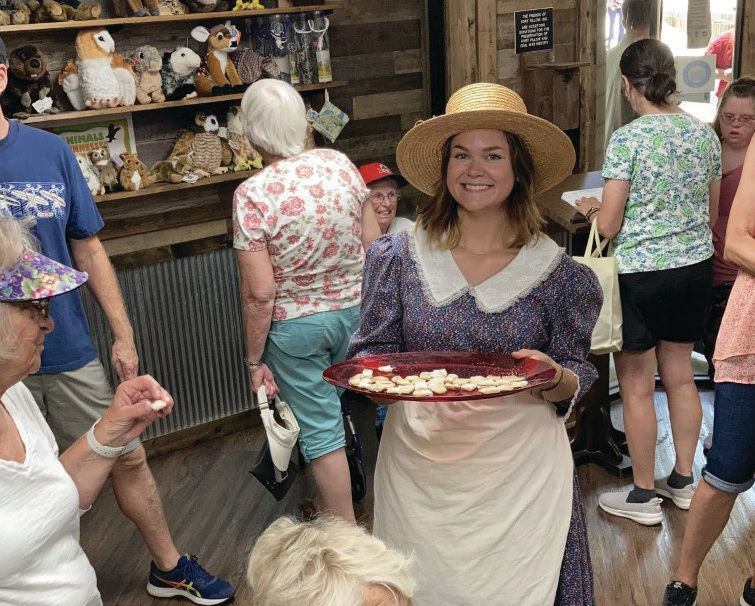 As is the case of many parks dedicated to preserving the history of the Civil War, the natural beauty, peaceful environs and recreational activities that visitors to Fort Pillow State Historic Park enjoy today make it easy to forget the land’s tragic past. But the story of that past has been preserved and explored through the park’s preserved breastworks, reconstructed inner fort, museum and interpretive programming presented by the rangers on staff.
As is the case of many parks dedicated to preserving the history of the Civil War, the natural beauty, peaceful environs and recreational activities that visitors to Fort Pillow State Historic Park enjoy today make it easy to forget the land’s tragic past. But the story of that past has been preserved and explored through the park’s preserved breastworks, reconstructed inner fort, museum and interpretive programming presented by the rangers on staff.
Steep bluffs overlooking the Mississippi River near Henning, 40 miles north of Memphis, made this area a strategic location during the Civil War. The fort was originally built by Confederate troops in 1861 and named after Gen. Gideon J. Pillow of Maury County.

While all war is tragic, the events that followed the Battle of Fort Pillow on April 12, 1864, are among the saddest, so much so that it became known as the Fort Pillow Massacre. Confederate troops under Maj. Gen. Nathan Bedford Forrest killed a large number of U.S. Army troops, many of them African American soldiers, who were attempting to surrender.
“The Confederate Army attack on the U.S. Army while occupying Fort Pillow remains one of the most controversial moments in the American Civil War,” says Park Manager Robby Tidwell. “The Confederate Army marked it as a military victory as they successfully retook the fort. The memory and eyewitness accounts of the massacre inspired the battle cry of ‘Remember Fort Pillow’ amongst U.S. Colored Troops for the remainder of the war.”

Fort Pillow today

While visitors can tour the parts of the park that tell the story of the battle and tragic aftermath, Fort Pillow State Historic Park is now also a place of natural beauty and opportunities for enjoying the outdoors. Nearly 20 miles of hiking trails, three water trails on Fort Pillow Lake (also known as Sullivan’s Pond) and Cold Creek, year-round canoe and kayak rentals, boating and fishing are among the ways to enjoy modern-day Fort Pillow.
Also available are a newly renovated campground with RV and tent sites, a picnic pavilion for group gatherings, a group camp that accommodates up to 200 guests, a butterfly garden that can be rented for weddings and a newly built observation deck overlooking the Mississippi River.
“Most visitors are not aware that Fort Pillow has very steep bluffs made of Mississippi alluvial loess,” says Tidwell, who began his career at Fort Pillow as a seasonal laborer in 2000 and became the park manager in 2005. “Most think the park will be flat like most areas within West Tennessee.”
Fort Pillow hosts several annual events. Next up is the Spring Hike on March 23. Then comes Living History, scheduled for April 13 this year.
“Living History is our largest event of the year,” Tidwell says. “This event is a full day of activities, including open encampments, museum tours, hikes, cannon demonstrations, rifle demonstrations, Civil War-era cooking demonstrations, food vendors and much more.”

Some of the many other events are Park Day held for cleanup and an Easter egg hunt, both in April; the Youth Fishing Rodeo in June; and the Fall Festival in October.
It’s not unusual for park staff to express affection for the parks where they work, especially if they are there for a long time. This is definitely true for Tidwell. In addition to his daily tasks and interaction with visitors, he can see pieces of his days before he was a ranger when he looks around the park.
“Before I started with Tennessee State Parks I worked as a farmhand in Tipton County,” he says. “We baled and delivered hay, stacked sod, worked with cattle and ran a sawmill during off time. The wood that we cut and planed during my childhood was stored in a barn and never used. I have been able to use that wood to redo the wood structures and displays within the museum. This makes all the displays and structures hold a very sentimental place in my heart.”




